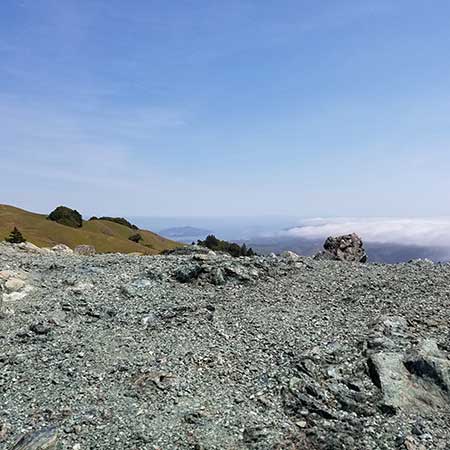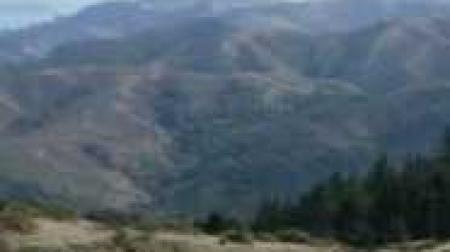Why Was This Indicator Chosen?
Serpentinite, California’s state rock, creates serpentine soils, which are characterized by low amounts of calcium, high amounts of magnesium, relatively heavy concentrations of nickel, chromium and other heavy metals, and low levels of nitrogen (USDA, 2016). Only certain plant species are able to survive in these soils. Serpentine is a rare soil type statewide, further limiting the distribution of plants that are specifically adapted to its harsh characteristics.
Serpentine barrens are characterized by open, rocky soil and support mostly scattered annuals such as jewel flowers, rosinweed (Calycadenia multiglandulosa), navarretias, and a few perennial plants such as lomatiums, and buckwheats. Many rare and locally rare (and Mt. Tam endemic) plants may also be found within these areas.
What is Healthy?
Although not calculated yet, some level of historic occupancy for suites of rare serpentine species is desirable.
What Are the Biggest Threats?
- Non-native barbed goatgrass (Aegilops triuncialis) and purple false brome (Brachypodium distachyon) invasion, and encroachment by native shrubs or grasses due to a lack of fire
- Trampling by recreationists
- Limited areas for migration under future climate change scenarios due to the relative rarity of serpentine soils
- Atmospheric nitrogendeposition, which can cause increased annual grass growth in serpentine barrens, which reduces open spaces and crowds out diminutive annual forbs restricted to these open areas
What is The Current Condition?
The overall condition is Fair because while the more “common” rare species are in Good condition, less common rare species and species of special concern are in Fair condition.
What is the Current Trend?
Overall, this community is Declining. Populations of the more common rare plant species have not changed, but the rarer ones appear to be in decline.
How Sure Are We?
We have Moderate confidence in this assessment based on combination of surveys and field staff observations.
What is This Assessment Based On?
- Marin Municipal Water District (MMWD) rare plant surveys, 2009–2016
- California Natural Diversity Database data for certain species (2016)
- Serpentine barrens are also visible from aerial photos and are well mapped in MMWD lands
What Don’t We Know?
Key information gaps include:
- If “barren” patch size influences rare species composition or occupancy resilience, or if patches need to be subsampled or rotationally sampled to determine health of the whole system
- Where suitable areas for population augmentation might exist
resources
United States Department of Agriculture Forest Service. (2016). Serpentine Soils and Plant Adaptations. Available from: http://www.fs.fed.us/wildflowers/beauty/serpentines/adaptations.shtml.




